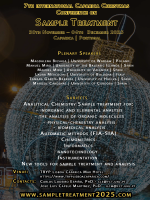Proteomic profiling of the HSPB chaperonome: Mass spectrometric identification of small heat shock proteins in stressed skeletal muscles
DOI: 10.5584/jiomics.v5i1.186
Abstract
The continuing maintenance of protein homeostasis and the safeguarding of proteomic integrity is essential for the survival of complex cellular systems under stressful conditions. Proteostasis is maintained by a complex system of protective pathways that involve several classes of molecular chaperones, now referred to as the chaperonome. The elaborate interplay of these components averts detrimental protein aggregation and supports proteins in resuming their functional fold. In skeletal muscle tissues, molecular chaperones protect contractile functions throughout fibre adaptations to changed physiological demands and prevent tissue damage during acute phases of protein misfolding or prolonged periods of proteotoxic stress. This results in considerable changes in the expression profile of individual members of the large family of heat shock proteins. Systematic proteomic surveys of skeletal muscle tissues have revealed that the concentration of small heat shock proteins is especially affected following strenuous exercise, in various neuromuscular disorders and during the natural aging process. Of the 10 identified members of the small heat shock protein HSPB family, HSPB1 (Hsp25), HSPB2 (MKBP), HSPB3 (Hsp27), HSPB4 (αA-crystallin), HSPB5 (αB-crystallin), HSPB6 (Hsp20), HSPB7 (cardiovascular cvHsp) and HSPB8 (Hsp22) are clearly present in skeletal muscle tissues. This review outlines the proteomic identification of small heat shock proteins and their muscle-specific expression and induction patterns in health and disease. Since HSPB molecules are of relatively low molecular mass, belong to the markedly soluble type of proteins and represent critical pro-survival proteins that are intrinsically involved in the prevention of stress-induced fibre damage, they present ideal muscle-associated biomarker candidates for the establishment of superior diagnostic and therapy-monitoring approaches to assess stress-related skeletal muscle degeneration.









